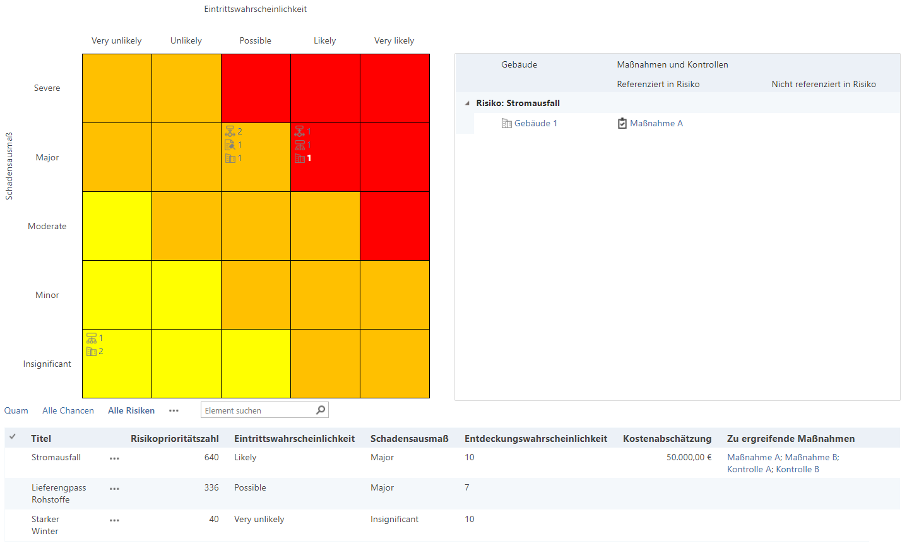Opportunities and risks analysis in Quam

Identifying and assessing opportunities and risks is more relevant than ever for organizations everywhere. The lack of information to understand existing situations adds to a general sense of uncertainty. And the more uncertainty there is, the more important it is to methodically address its positive or negative aspects – as is the case in the current pandemic. This is the key to moving from a reactive situation to proactive action.
Opportunities exist – even and especially during a crisis – in all companies, but not all companies deal with them equally and, above all, correctly. Thus, promising opportunities repeatedly turn into losses. At the same time, risks are simply suppressed instead of being consciously managed or avoided, which can hinder the company’s progress. This is precisely why companies need good tools for identifying and evaluating opportunities and risks.
The right way to deal with opportunities and risks
Often, the question therefore arises: How do you actually deal with opportunities and risks in the right way? Who is responsible for this in my company? Which tools do I use best?
There is no clear answer to these questions. There is no one right way, no one truth for the right opportunity and risk management. Because this is as individual as the company itself. What is certain, however, is that simply identifying opportunities and risks is not enough. Instead, they must be linked to a wide variety of factors. Organizational relationships must be formed and mapped here in order to achieve added value for the company.
The new module in Quam 6.1
The new “Opportunities and Risks” module, which will be available as an add-on for Quam 6.1 from April, supports an enterprise-wide, risk-based approach. At any time, workgroups and teams can form to identify and classify potential opportunities and risks directly at the process. These can then be linked to a probability of occurrence and potential impact. Quam also automatically calculates a risk priority number to simplify prioritization of known risks. However, it is not enough to just identify opportunities and risks: In Quam, you can immediately define derived measures that include suggested actions should certain events actually occur.
The module is rounded off with two evaluations. These provide valuable information on the classification of all recorded opportunities and risks on a matrix with regard to the probability of occurrence and the extent of damage of risks, or the expense and benefit of opportunities.

This allows processes to be mapped and viewed even more holistically. When an event actually occurs, Quam and the respective processes can be used to trace exactly which elements and areas are affected. This in turn allows conclusions to be drawn about functionality and shows effects on other processes. Using the individual process chains, business processes can be traced in detail and, above all, quickly, and the development of measures is simplified. In addition, bi-directional object linking allows the corresponding elements to be viewed, adjusted and changed. In this way, everyone in the company receives exactly the right information, individually tailored to interests and needs.
Would you like to delve even deeper into the topic of Quam in terms of opportunities and risks? Then please feel free to contact us!
